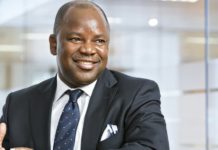
[miningmx.com] — JUDGING by the renewed debate over whether the Coega aluminium smelter will go ahead it seems to me Government is still not listening to Eskom CEO Jacob Maroga.
Sadly, the ruling politicians are not the only ones hard of hearing when it comes to Maroga’s comments on Eskom’s dire situation.
Most of the media have not got his message and I wonder how many South Africans realise how bad the situation facing the country is.
Just because we have not had gridlock in Sandton for a few months because of failed traffic lights it does not mean the problem has gone away.
I am blaming Government because I assume – as the sole shareholder in Eskom and with a vested political interest in making Coega happen for the Eastern Cape – that it is behind Eskom’s latest comments on the “best case’ scenario for Coega.
Those were made in Business Report in reply to statements by BHP Billiton CEO Marius Kloppers who reckons that Coega is history.
Kloppers’ opinion is an expert one because BHP Billiton has been forced to cut production from its aluminium smelters in Richards Bay and put planned expansions on hold because of power restrictions.
The media missed the crucial point Maroga made when he presented Eskom’s 2008 annual report on July 17. He stated flatly there will be no spare power until about 2014 unless the country saves it.
They missed it because they all focussed on Maroga’s one piece of good news, which was there would be no more load-shedding this winter.
Let me provide perspective on that one from straight-talking Stuart Murray, the CEO of Aquarius Platinum. He told his shareholders recently that, “this has been one of the mildest winters on record yet Eskom has only just managed to get through it by the skin of its teeth.’
The politicians are not listening because they seem to inhabit a dream-world where the SA economy can achieve an annual 6% growth rate in GDP just because they say it should.
Maroga initially spelt out the situation in a press release on June 12 in which he said, “Our operating reserve margin is such that Eskom cannot accommodate any new connections unless space is created on the system.’
On July 17, he described SA as being “at a crossroads’ and stated that Eskom would not be able to get on top of SA’s power supply crisis purely through building new power stations until about 2014.
He said the country had to save between 5% and 10% of the power previously consumed if it is to avoid another crisis between 2010 and 2013. On his “Eskom base case’ figures, Eskom’s reserve margin will drop to 2% in 2010 and then turn negative between 2011 and 2013 without such power savings.
To put that in perspective please note Eskom’s reserve margin averaged 5.6% last year in the run-up to the crisis triggered in January when Eskom declared force majeure and pulled the plug on the country’s mining industry.
Back to Coega. I wrote in a commentary on January 18, ” is Rio Tinto CEO Tom Albanese really so stupid as to build a $3bn aluminium smelter in a country which cannot guarantee the power supply?’
As it turned out he’s not. Albanese subsequently stated Coega would not happen until Rio Tinto had cast iron guarantees over the power supply.
Eskom clearly cannot provide such guarantees until 2014.
Albanese is unlikely to go ahead on the basis of using power being saved from other users. He will want to see concrete proof in the form of new power stations up and running and delivering power.
Kloppers, who inherits Coega if BHP Billiton succeeds in taking over Rio Tinto, will be just as hard-arsed.
Which raises the next point. Eskom has not built a new power station in 20 years. It is now building two 4,800MW monsters – Medupi and Kusile – at a time of severe skills shortages in South Africa.
It’s also doing it at a time when there is intense competition worldwide for such skills as well as the specialised equipment needed to build these power stations. There are a number of country’s facing power crunches and one of them is China. Guess who is going to get priority from the suppliers if it comes to a crunch?
There’s the distinct possibility of further “slippage’ on the projects, which are already running nearly two years behind the initial schedule.
So let me remind you of something else Maroga said on July 17 – just in case you missed that as well.
Asked whether Eskom was being optimistic on its construction schedules Maroga commented, “We are working on the assumption that we will make these timetables but, if they shift, then the reserve margin will worsen.’











